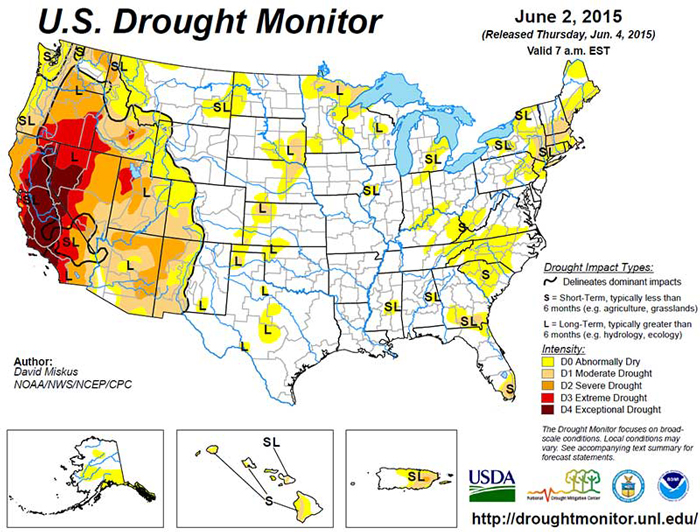I’ll have to say, the first time I looked at the U.S. Drought Monitor Index map released for June 2, I was shocked. The pockets of orange, yellow and brown indicating extreme drought in Texas, Oklahoma and Kansas, seemingly permanent fixtures, had all but disappeared in a span of 4-6 weeks.
Torrential rains that came last month in the southern Plains probably came too late for the struggling winter wheat crop. And yes, it caused some planting delays for crops like corn and cotton. Some growers were unable to plant at all this spring and will need to rely, again, on crop insurance.
But these rains also gave farmers some opportunity to raise harvestable summer crops for the first time in years. And it’s finally looking more feasible to get some cover on these fields and get soils productive again.
Now is a good time to evaluate how your fields handled these intense rainstorms. While it’s probably not realistic for any soils to handle 100% of these deluges, how much of this rain do you think soaked into your fields vs. running off? What evidence of sheet, gully or rill erosion, or soil surface sealing, are you seeing?
As South Dakota State University Extension fields specialist Anthony Bly notes, the occurrence of these events are a result of soil with poor structure, low organic matter (carbon), unprotected soil surface, possibly little or no earthworm activity, and tillage.
One statistic I heard recently was telling: For every 1% increase in organic matter, U.S. cropland could store the amount of water that flows over Niagara Falls in 150 days. It should be noted that achieving a 1% increase in organic matter isn’t easy. Depending on the soils and management decisions involved, increasing soil organic matter takes time.
But the improved water infiltration rates possible through no-till adoption are key to helping improve drought resiliency, allowing farmers in semi-arid climates to better advantage of smaller precipitation events and, hopefully bank subsoil moisture with larger rainfall events.
And getting soils covered will reduce the amount of evaporation that occurs. If you’ve been hesitating to try cover crops on your farm, perhaps there’s enough moisture in the soil profile now that some experimentation can begin.
It’s wonderful to see a break in the drought, and the possibilities out there for growers who have some soil moisture to work with now. But farmers should also look down the road a bit, and think about how they can preserve it.








Post a comment
Report Abusive Comment